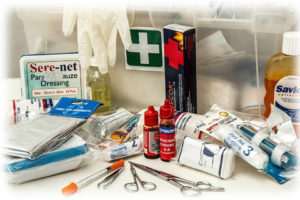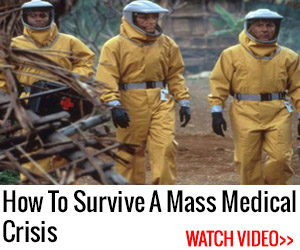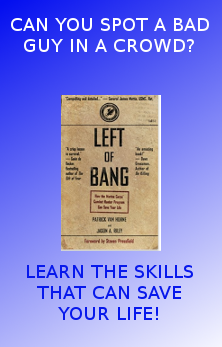What Makes The Best Survival First Aid Kit?

Whether you’re hunting, hiking, playing sports, or running from Neegan while hiding from a zombie horde, it’s essential to have a good first aid kit.
We’ll show you just how easy it is to build your own first aid kit from scratch, as well as show you some good retail kits that can really save your bacon. One thing everybody overlooks in a first aid kit (or just about anything prepping for that matter) is simplicity.
While we want to be prepared for anything, small or large, we need to remember the 80/20 rule: Don’t spend 80% of your resources on things that will affect you 20% of the time. The principles in our article on Prepping Wrong apply to your first aid kit as well.
Our kit will contain items necessary to treat major wounds, but let’s start with the basics. When you’re out and about, minor scrapes and abrasions, headache, and diarrhea are some of the most likely things you’ll suffer from.
Hardware for the Kit
-
Tweezers
-
Q-Tips
-
Scissors
-
Nail Clippers
-
Thermometer
-
Scalpel
-
Luci Light (Space saving and will burn all night)
Meds for the Kit
-
Ibuprofen
-
Immodium (or store brand)
-
Aspirin
-
Sudafed (or store brand)
-
Acetaminophen
-
Benadryl (or store brand antihistamine)
-
Laxative
-
Iodine
-
Neosporin
-
Hand sanitizer
-
Hydrocortisone
-
Smelling salts
Treating Wounds
As we stated, most wounds will likely be small cuts and blisters. Mild scrapes and the like. Serious wounds and trauma are more rare, but can be very scary. Please remember that nothing can replace a hospital or doctor visit for serious wounds! Most of us are woefully unprepared to treat trauma, and when the time comes keeping calm is the best first step that anyone should take.
For those times when a hospital is out of range, or for the time before we can get to a hospital the following items will help treat wounds of any caliber.

Trauma Items
-
Nitrile (rubber) gloves
-
Syringe (for wound irrigation)
-
Medical tape
-
Alcohol wipes
-
Various size Band-Aids
-
Gauze pads
-
Ace Bandages
-
Tourniquet
-
Suture kit
-
Butterfly closure
-
Tegaderm
-
Personal Kit Items
Many times there will be personal things you or your family will need. Does anyone have an inhaler? Some of these items are prescription, so use them at your own risk. Part of being prepared is being smart, and knowing what you can and cannot handle. Please be responsible!
-
Inhaler
-
Epi Pen
-
Sunscreen
-
Lighter/matches
-
Toothbrush/paste
-
550 Paracord
-
Signal mirror
-
Tampons (good for nose bleeds as well!)
-
Water bottles
Putting it all Together
Once you have all of the items you require for your kit, you’re going to want a bag or container to keep it organized. Most retail kits are housed in canvas bags or backpacks. Your container should be easy to carry and store, yet still be protective enough for the items inside.
There are numerous dollar store containers available which can be used to separate the items by type. We recommend separation as follows:
-
Trauma Items
-
Prescription Items
-
Other meds
-
Items needed for minor occurrences
Since you won’t have much time when trauma items are needed, be sure they’re accessible and easy to reach. We have a large first aid kit in a rubbermaid container in the camper, and smaller ones in each car. Package yours to match your lifestyle.
What about buying kits?
No abundance of spare time? Buying survival first aid kits is definitely a viable and fast way to get up and running quickly. We still buy smaller kits for personal carry, and our first big family kit was a portable surgical hospital from Cheaper Than Dirt. Here are a few of our favorites:
LIghtning X Molle Trauma Kit: This kit is designed more for trauma, but the molle fasteners and small form factor make it very useful. Can be augmented with personal items as well.
This 85 pc kit from Walmart was carried in all of our cars for years. It lacks major trauma items, but for most kid scrapes and such it’ll do the trick. And the price is right at under $5!
No matter which way you go, having the biggest, best kit available will do you NO GOOD without some know-how!
Invest in some training for yourselves and your family. There are plenty of free resources to get you started.
First Aid for Free – Site with free training and printable certificates upon completion.
First Aid Web – Another free training site with certification
Boy Scouts of America – Getting involved with Scouting is a good way for kids to learn first aid.
And there are numerous books available on the subject.
So get your kit on, get some knowledge and be prepared for whatever the world throws at you!
Stay safe! Freedom is Within You!




